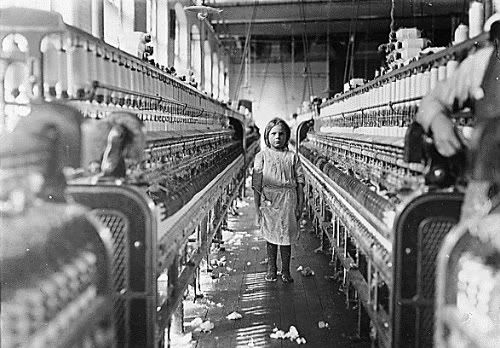Having your daughter leave home and go into a far away city isn't the most appealing option. But back in the 1800s when poor farm families were struggling to get food on the table, it seemed like a great idea. Having a girl at home could be a drawback, they are just an extra mouth to feed and they don't do yard work. When mill owners came to recruit girls, they would bribe fathers by saying how the mills would raise them to be young ladies, along with getting paid. The girls would have strict curfew and were not allowed to date boys. Also, the young ladies would get an education. The mill owners really emphasized on how this experience would be temporary: The girls arrived at age 14 and then could leave at 19 or 21 to go start their own families. Families gave their approval after finding out this information. Eventually, this is how the mill girls came to be. However, there were drawbacks to becoming a mill girl. First, you had to leave your family and wouldn't see them for months or up to years at a time. The girls would have to move in with strangers and room with six other girls. Mills were dangerous, loud and had low air quality because of cotton fibers in the air. Being a girl meant you didn't have as many rights as the men, and you didn't get paid as much. You had to follow every rule given by the "father figure of the mill"; if a girl was a couple minutes late for curfew, she could lose her job. Once you were kicked out of a mill it would be almost impossible to find another mill job.
The woman became angry because they thought they weren't getting paid the amount they deserve. Mill girls left their impact by changing common perceptions on women working outside the house. Before if women worked outside the house they were thought of as manly or not able to get a husband. But mill girls showed everyone they could live outside the house, get educated, and help support their soon to be families. Some girls who participated in the Lowell Experiment became outspoken abolitionists and women's right activists. Women managed to change the way they were thought of in the short time the Lowell Experiment took place.
 |
| This image shows a small girl working the Lowell mills. Take note on how small this girl is, and how she doesn't look happy. The mill is also dirty with cotton all over the floor. Spinning down superpower: An interview with Quinn Norton - The Breaking Time |
e
ReplyDelete